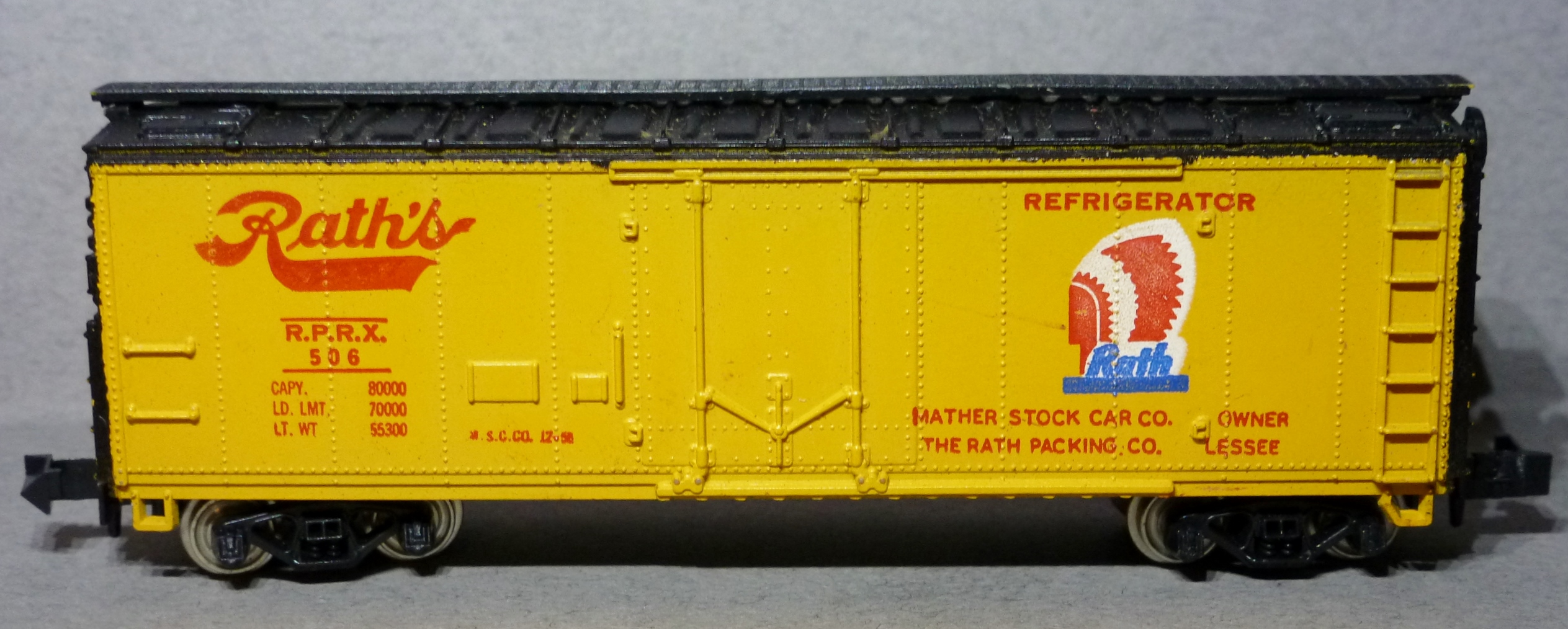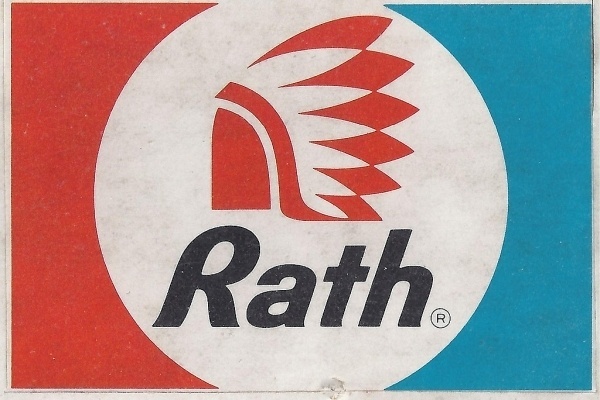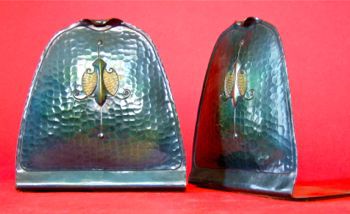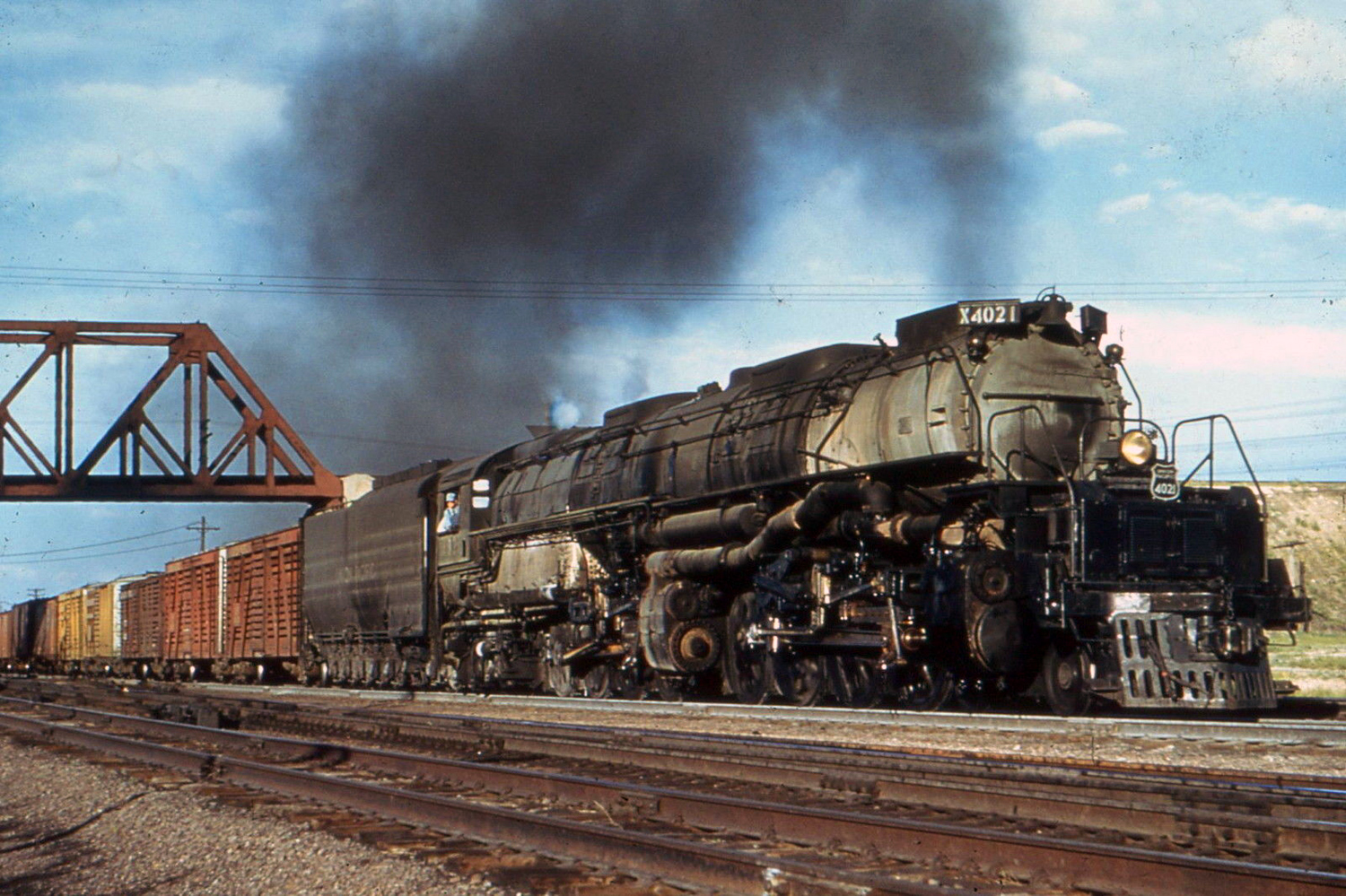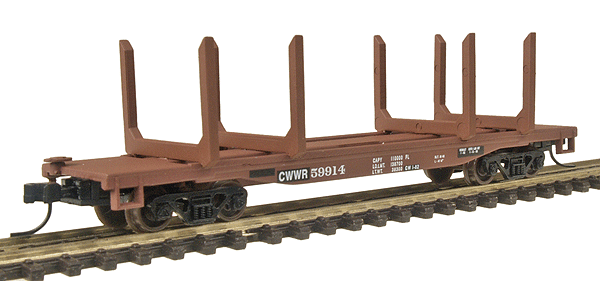Specific Item Information: Sansui Con-Cor product
Model Information: This model was originally produced by Kato for Con-Cor. Since Con-Cor owned the tooling, they were later able to move the tooling to Chicago for later runs. It has been marketed as a "40' Steel Box Car[sic]" as well as "40' Steel Reefer". We believe current runs are being made in China. Pictures of this model were available as of May 2017 on the Con-Cor website being sold with two options for couplers: Rigid-Face and Micro-Trains.
Prototype History: Plug-Door boxcars are usually insulated and typically carry products such as canned goods that require protection from extremes of temperature but do not require refrigeration. Plug-style doors were normally used to ensure a tight seal in the insulation. Designed for transport of both perishables and large loads, plug doors allowed box cars to be sealed from outside dust and dirt. Cars like these were manufactured during the 50s and 60s.
Whether you consider this a reefer or a boxcar is a matter for angel-pinhead-counters. There seems to be a bit of a blurry line during the transition era between the idea of a steel ice reefer and an insulated boxcar. I guess an ice reefer was meant to hold ice for cooling but I doubt this is a cut-and-dry distinction. Modern "mechanical" reefers are a different breed as they contain a refrigeration unit which quite distinctly sets them apart from "boxcars".
Whether you consider this a reefer or a boxcar is a matter for angel-pinhead-counters. There seems to be a bit of a blurry line during the transition era between the idea of a steel ice reefer and an insulated boxcar. I guess an ice reefer was meant to hold ice for cooling but I doubt this is a cut-and-dry distinction. Modern "mechanical" reefers are a different breed as they contain a refrigeration unit which quite distinctly sets them apart from "boxcars".
Road Name History: The Rath Packing Company was a meatpacking company located in Waterloo, Iowa between 1891 and 1985.
The Rath Packing Company (Rath) of Waterloo (Iowa) opened for business on November 24, 1881, on the Cedar River. Initially, the company concentrated on hogs, but by 1908 the company was also slaughtering beef and soon lamb as well. Business thrived; lucrative contracts to supply meat to the Armed Forces during both World Wars helped the company grow. Growth and profitability were also spurred between the 1930s and 1950s by innovations such as the fancy dry curing of bacon and the vacuum canning of meats. By the company's fiftieth anniversary in 1941, the small regional packing house in Waterloo had grown into the nation's single largest meatpacking facility with branch facilities in 12 states. By the end of World War II, Rath was the fifth largest meatpacker in the U.S. Through two world wars, stock market panics, depression, and drought, the company had failed to show a profit in only four of its years.
Read more on Wikipedia.
The Rath Packing Company (Rath) of Waterloo (Iowa) opened for business on November 24, 1881, on the Cedar River. Initially, the company concentrated on hogs, but by 1908 the company was also slaughtering beef and soon lamb as well. Business thrived; lucrative contracts to supply meat to the Armed Forces during both World Wars helped the company grow. Growth and profitability were also spurred between the 1930s and 1950s by innovations such as the fancy dry curing of bacon and the vacuum canning of meats. By the company's fiftieth anniversary in 1941, the small regional packing house in Waterloo had grown into the nation's single largest meatpacking facility with branch facilities in 12 states. By the end of World War II, Rath was the fifth largest meatpacker in the U.S. Through two world wars, stock market panics, depression, and drought, the company had failed to show a profit in only four of its years.
Read more on Wikipedia.
Brand/Importer Information: Con-Cor has been in business since 1962. Many things have changed over time as originally they were a complete manufacturing operation in the USA and at one time had upwards of 45 employees. They not only designed the models,but they also built their own molds, did injection molding, painting, printing and packaging on their models.
Currently, most of their manufacturing has been moved overseas and now they import 90% of their products as totally finished goods, or in finished components. They only do some incidental manufacturing today within the USA.
Important Note: The Con-Cor product numbering can be very confusing. Please see here in the article how to properly enter Con-Cor stock numbers in the TroveStar database.
Currently, most of their manufacturing has been moved overseas and now they import 90% of their products as totally finished goods, or in finished components. They only do some incidental manufacturing today within the USA.
Important Note: The Con-Cor product numbering can be very confusing. Please see here in the article how to properly enter Con-Cor stock numbers in the TroveStar database.
Item created by: gdm on 2016-11-14 15:41:44. Last edited by gdm on 2020-07-24 07:29:28
If you see errors or missing data in this entry, please feel free to log in and edit it. Anyone with a Gmail account can log in instantly.
If you see errors or missing data in this entry, please feel free to log in and edit it. Anyone with a Gmail account can log in instantly.


